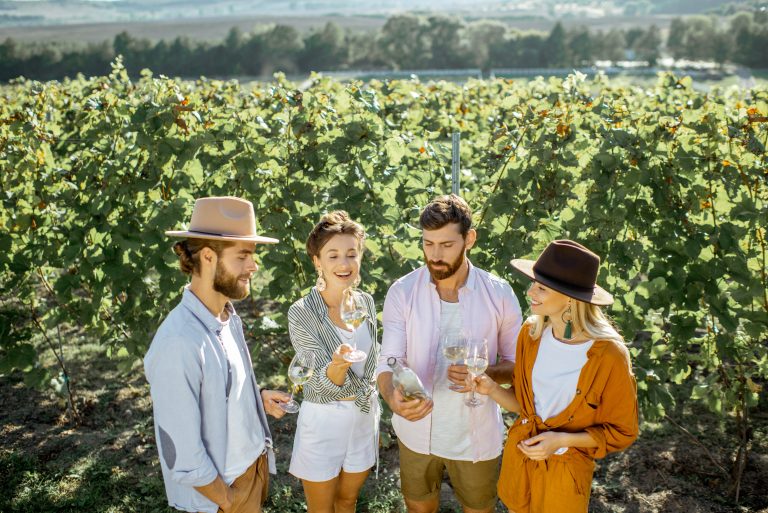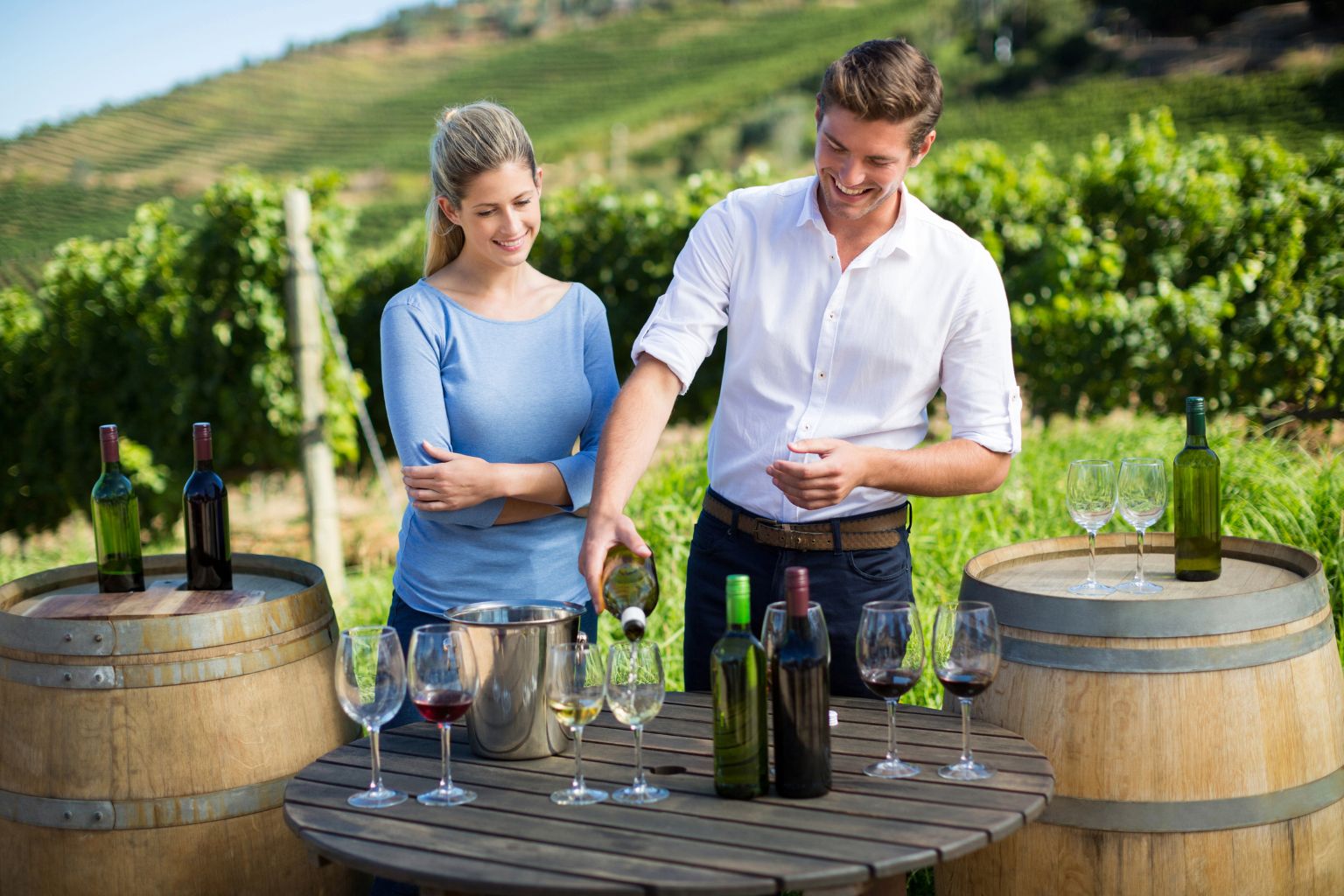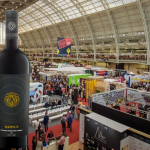When we reach for a bottle of wine on the shelf, the label tells us more than we might think. Behind abbreviations such as DOC-CMD, IG, and others lies an entire story — about where the grapes come from, the rules the producer must follow, and the winemaker’s intention. As a member of the European Union, Romania aligns with European wine regulations while preserving its own local character.
DOC Wines – Wines of Identity and Discipline
DOC wines (Denomination of Controlled Origin) are regarded as the crown jewels of Romanian viticulture. They cannot simply appear on the market; a series of strict regulations gives them both value and credibility.
To be classified as DOC in Romania, a wine must meet several conditions:
Origin of the grapes: At least 100% of the grapes must come from a clearly defined viticultural area (for example, Dealu Mare, Cotnari, or Miniș–Măderat).
Authorized grape varieties: Only approved grape varieties for that region can be used.
Yield control: Production per hectare is limited to ensure grape quality.
Minimum sugar content at harvest: There are mandatory minimum thresholds.
Vinification: The winemaking process must take place within the delimited area.
The DOC classification also includes additional categories:
DOC-CMD – Harvested at Full Maturity
DOC-CT – Late Harvest
DOC-CIB Harvested at Noble Rot (sweet wines obtained from grapes affected by Botrytis cinerea).
How Many DOCs Exist in Romania?
According to the official ONVPV list, Romania currently has 35 DOC designations for still wines and 10 DOCs for sparkling wines, plus a separate mention for petillant wines. Almost every DOC includes sub-denominations — for example, producers in Dealu Mare can indicate the specific vineyard center where the grapes come from: Dealu Mare–Boldești, Dealu Mare–Valea Călugărească, Dealu Mare–Urlați, Dealu Mare–Ceptura, Dealu Mare–Tohani, Dealu Mare–Breaza, Dealu Mare–Merei, or Dealu Mare–Zorești.
Especially for small and very small producers, it is also possible to mention the vineyard plot (plai viticol) on the label, in addition to the controlled origin and vineyard center — for instance, Valea Pietrei or Valea Nucetului in Tohani, Malu Roșu in Ceptura, or Năeni and Săhăteni in Dealu Mare–Breaza.
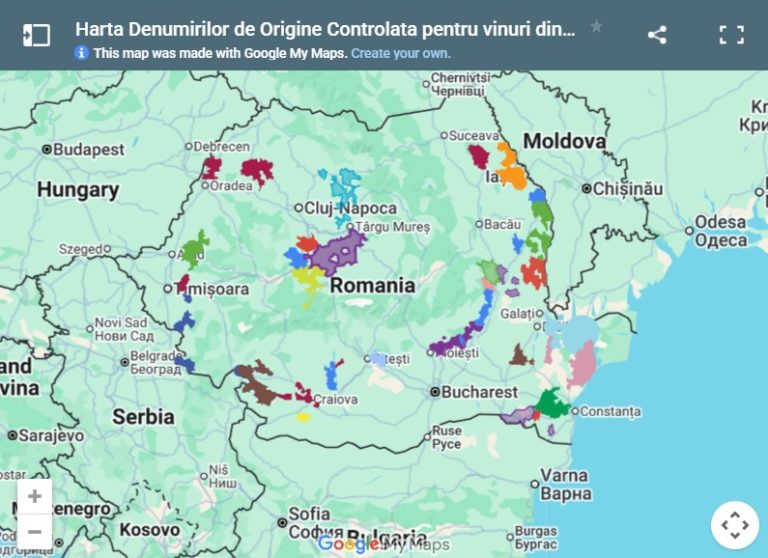
IG Wines – Freedom with Local Roots
A step below in strictness, we find wines with Geographical Indication (IG). These wines also follow rules, but they are more flexible:
At least 85% of the grapes must come from a delimited region, although the area is broader than in the case of DOC wines.
The list of grape varieties that can be cultivated is more permissive.
The thresholds for sugar accumulation and yield limits are more generous.
The winemaking process can take place even outside the delimited area.
IG wines guarantee a clear connection with their region of origin while offering winemakers the freedom to experiment and innovate.
How Many IGs Exist in Romania?
According to ONVPV, Romania has 12 protected geographical indications for still wines: Dealurile Sătmarului, Dealurile Crișanei, Dealurile Zarandului, Viile Timișului, Viile Carașului, Dealurile Olteniei, Dealurile Munteniei, Terasele Dunării, Colinele Dobrogei, Dealurile Vrancei, Dealurile Moldovei, and Dealurile Transilvaniei.
These are grouped into seven larger viticultural regions, which roughly follow the historical borders of Romania’s provinces: Banat, Dobrogea, Maramureș, Moldova, Muntenia and Oltenia (considered one region together), the Transylvanian Plateau, and the Danube Terraces.
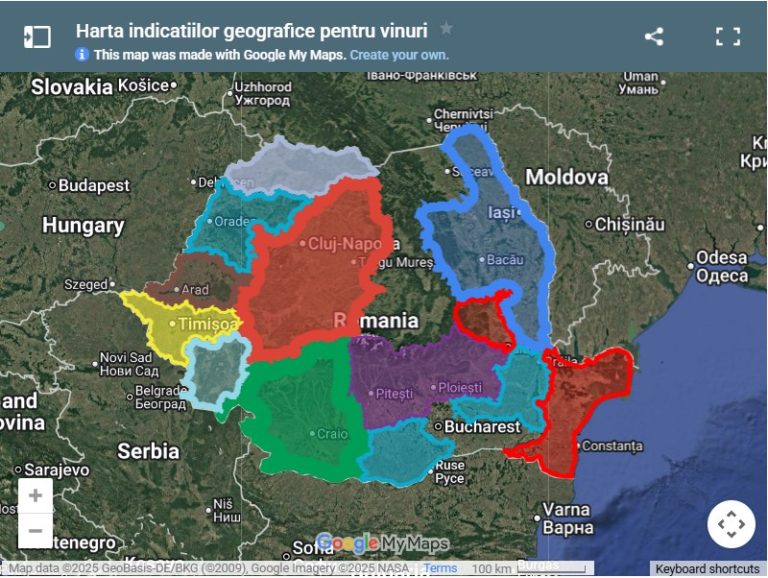
Varietal Wines – The Story of the Grape
The third category, and perhaps the easiest for consumers to understand, is that of varietal wines. Here, the focus is not on place but on the grape variety itself.
If the label reads Sauvignon Blanc, Merlot, or Fetească Neagră, it means the wine is varietal and that at least 85% of it comes from that grape. The requirements for a wine to be classified as varietal are less restrictive than those for DOC and IG wines.
Varietal wines are particularly useful for export, since a Cabernet Sauvignon from Romania is far easier for a consumer in London or New York to understand than a label listing DOC / vineyard center / plot name.
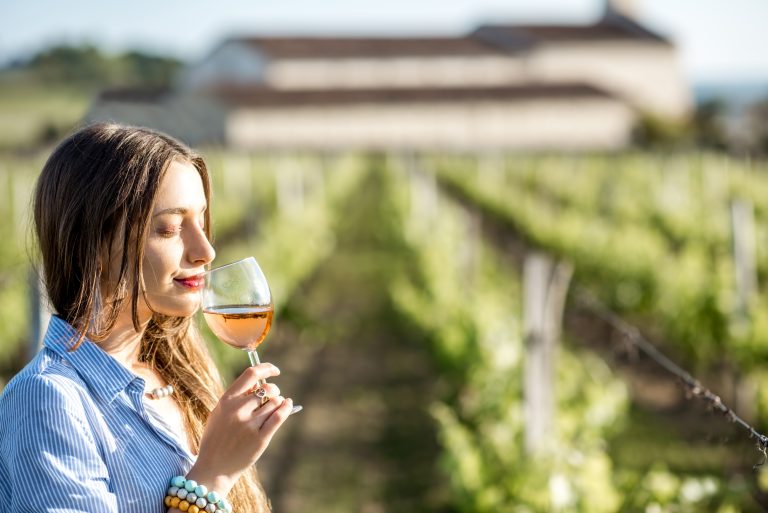
Romania and Italy: DOC vs. DOCG
To better understand where Romania stands, it’s helpful to compare its system with Italy’s hierarchy of wine classifications.
DOC (Denominazione di Origine Controllata) – similar to Romania’s DOC: a delimited area, clear rules, and controlled production.
DOCG (Denominazione di Origine Controllata e Garantita) – a higher level of classification, where each batch of wine is tested and certified by a government commission before release, and bottles receive an official seal. Examples include Barolo DOCG and Brunello di Montalcino DOCG.
Romania does not yet have a DOCG level, but its DOC system functions similarly and covers the premium wine segment.
However, as some critics point out, over-regulation can also become a trap and even a barrier to creativity.
The clearest example comes again from Italy — the birthplace of the Super Tuscan wines.
When the law prohibited the use of Cabernet Sauvignon in DOC wines, producers who dared to blend it sold their creations as simple table wines — the lowest classification level. Yet these wines, such as Sassicaia and Tignanello, went on to become global icons, now sold for hundreds or even thousands of euros a bottle.
Over time, regulations softened to acknowledge their quality, first through the IGT Toscana classification and later with the creation of DOC Bolgheri, the home of Sassicaia.
Conclusion
The label on a wine bottle is more than just decoration — it is the map of the wine.
DOC guarantees authenticity and terroir. Romania currently has 35 DOCs for still wines and 10 DOCs for sparkling wines.
IG promises authenticity with flexibility. Romania officially recognizes 12 IGs.
Varietal wines simply tell you which grape you’re drinking, regardless of region
Romania offers all of these options — meaning that whether you’re a lover of complex, terroir-driven wines or simply looking for a good Sauvignon Blanc for dinner, the classification system will guide you to the right bottle.
